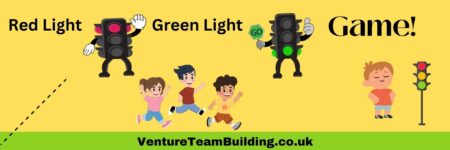By Heather Hafner
Our series on the DISC behavioral styles has addressed how to use DISC with adults. But, we often get questions from workshop participants asking about how to determine your child’s DISC style. Like adults, children have unique traits that can help you identify their primary style.
Before going any further, let’s review the four DISC styles. You can refer to the style by name or letter. We believe the DISC is easier to remember, and more meaningful, by pairing the styles with birds from the book by Merrick Rosenberg and Daniel Silvert, Taking Flight!
- “D” refers to Dominant and is represented by an Eagle. They are daring, decisive, direct, and driven.
- “I” refers to Interactive and is represented by a Parrot. Parrots are imaginative, influential, intuitive and inspirational.
- “S” refers to Supportive and is represented by a Dove. Doves are sincere, steadfast, sympathetic and satisfied.
- “C” refers to Conscientious and is represented by an Owl. They are cautious, critical, concise, and consistent.
One of the challenges of parenting is understanding why your child behaves the way they do. If you have more than one child, you probably have children who react differently to the same situation. One may want to “get to the point” during a discussion while the other would like to know the reason behind a decision. Understanding a child’s style can help listen and speak in ways that open up the lines of communication and help you see the world from their standpoint.
Rosenberg and Silvert have developed 10 key indicators for each style to help you soar with your child.
Eagle Children
- Crawl and walk early
- Can be bossy with other children
- React defiantly when they hear the world “no”
- Insist upon their own rules, such as determining their own bedtime
- Don’t accept that others have authority over them, including teachers
- Stubbornly demand what they want
- Naturally lead others, controlling situations and people large and small
- Throw temper tantrums when they don’t get their way
- Need to win at everything, from games to the best toy to getting to stay up the latest
- Are always on the move – doing, building, or rebuilding something
Parrot Children
- Happily get dirty or messy
- Add comedy and practical jokes to everyday life
- Have a limited attention span
- Need constant stimulation
- Have several groups of friends, such as neighborhoods, school and sports
- Make up their own games or change the rules of existing games just to experience something new
- Take big risks just to see what will happen (things don’t always turn out well, but at least they get a good story to tell!)
- Are happy to be the center of attention, whether it’s in the classroom, at the dinner table, or on a stage
- Can “sell ice to Eskimos” and can charm their way out of nearly anything
- Easily exaggerate and apply selective use of facts to fit their needs
Dove Children
- Take their time when learning to walk
- Eat, drink, and move slowly and methodically
- Go to bed without a fight
- Get pleasure from helping others
- Play by the rules of others
- Bond strongly with a few close friends
- Are slow to adapt to new activities and void taking risks
- Let other children take the lead
- Share their toys and play well with other children
- Can be very shy and introverted
Owl Children
- Don’t like getting dirty, messy, or sticky
- Have a gift for taking things apart to understand how they work and can then put them back together
- Endlessly ask “why” and “what if” questions
- Are comfortable with routines that create consistency and order in their schedule
- Prefer mental challenges to physical games and can focus on one activity for long stretches
- Get very upset when rules are broken
- Have a smaller range of personal space than the other styles
- Worry about and analyze things that might go wrong
- Don’t respond well to playful banter
- Insist on a special place for everything
After reading the 10 key indicators you might feel like your child is combination of two styles. That would not be unusual. The majority of people have two styles that they comfortably use on a day-to-day basis and two others that require more energy to access.
Most of the styles do share something in common when paired. Do you think your child is a Peagle (Parrot and Eagle)? These styles are high energy and outgoing while Dowls (Dove and Owl) tend to be more reserved and even paced. If you child is very task oriented, they could be an Eagle/Owl. What if they are people oriented, sometimes liking small groups and other times preferring large-group interaction – they could be a Dove/Parrot. The hardest to read are the combinations of Eagle/Dove and Parrot/Owl because they share a combination of an outgoing and reserved style and are part task and people oriented.
Whatever their style, we celebrate their individuality. And we hope that we have helped bridge the gap to better understanding your flock.




